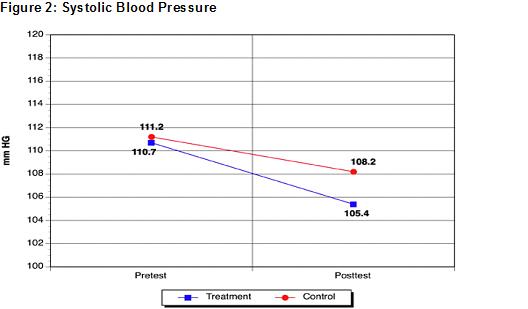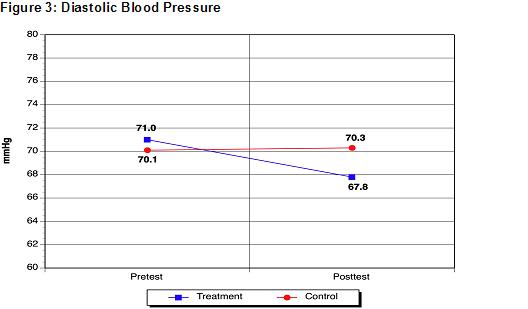The Implementation Guide is a resource for implementing this evidence-based program. It provides important information about the staffing and functions necessary for administering this program in the user’s setting. Additionally, the steps needed to carry out the program, relevant program materials, and information for evaluating the program are included. The Implementation Guide can be viewed and downloaded on the Program Materials page.
Program Synopsis
Designed to increase physical activity and improve dietary habits among minority adolescents, this school-based intervention delivered by physical education teachers consists of manual-guided sessions that integrate vigorous exercise with health and nutrition education as well as homework assignments to enhance classroom learning. The study showed decreases in body fat, systolic blood pressure, and diastolic blood pressure.
Program Highlights
Program Materials
Preview and order the materials from the developer
Implementation Guide
Download Implementation Guide
Program Scores
The Need
Research on heart disease has largely neglected women, even though cardiovascular disease is the leading cause of death in women as well as men in the United States. Studies on cardiovascular disease in young girls indicate a high prevalence of risk factors such as obesity and physical inactivity that often persist into adulthood and predict early onset of atherosclerosis. The prevalence of these risk factors is especially alarming among urban girls and may explain increased morbidity and mortality from cardiovascular disease observed among certain minority female populations. Interventions to attenuate cardiovascular risk factors among urban teenage girls are needed.
The Program
The Physical Activity and Teenage Health (PATH) Program is a school-based intervention for minority urban adolescents (boys and girls) that integrates vigorous exercise with health and nutrition education to promote knowledge of heart-healthy behaviors, increase fitness levels, and reduce risk factors associated with cardiovascular disease (however, the studies reviewed and reported for this program summary were for minority urban teenage girls aged 14-19 years). Program materials include a manualized curriculum for teachers, and student manuals that provide information about the anatomy and physiology of the heart, cardiovascular risk factors, the heart disease process, proper exercise and nutrition, stress management, cigarette smoking avoidance and cessation techniques, and strategies for modifying high-risk health behaviors. The curriculum is designed to be taught by physical education teachers in five 30-minute sessions per week over 12 weeks. The sessions include a brief 5 to 10 minute discussion featuring a topic on cardiovascular health and fitness and suggestions for modifying health behaviors. The discussion is followed by 20 to 25 minutes of vigorous physical activity, alternating daily between resistance and aerobic exercise. The curriculum also includes homework assignments to enhance or clarify material covered in the classroom discussions.
Community Preventive Services Task Force Finding
 This program uses an intervention approach recommended by the Community Preventive Services Task Force: enhanced school-based physical education interventions (Physical Activity). This program also uses the following intervention approach for which the Community Preventive Services Task Force finds insufficient evidence: school-based programs promoting nutrition and physical activity (Diet and Nutrition). Insufficient evidence means the available studies do not provide sufficient evidence to determine if the intervention is or is not effective. This does not mean that the intervention does not work. It means that additional research is needed to determine whether the intervention is effective.
This program uses an intervention approach recommended by the Community Preventive Services Task Force: enhanced school-based physical education interventions (Physical Activity). This program also uses the following intervention approach for which the Community Preventive Services Task Force finds insufficient evidence: school-based programs promoting nutrition and physical activity (Diet and Nutrition). Insufficient evidence means the available studies do not provide sufficient evidence to determine if the intervention is or is not effective. This does not mean that the intervention does not work. It means that additional research is needed to determine whether the intervention is effective.Time Required
The curriculum is designed to be taught in five 30-minute sessions per week over 12 weeks.
Intended Audience
The intervention is intended for minority adolescents.
Suitable Settings
The intervention is suitable for school systems that serve minority adolescents.
Required Resources
Materials required for implementation include: the PATH Teacher Manual and the PATH Student Curriculum and workbook.
About the Study
Between 1994 and 1996, 442 teenage girls aged 14 to 19 years at three urban high schools were randomly assigned to either a traditional physical education class or a physical education class that taught the PATH curriculum. Due to logistical difficulties involved in randomly assigning individual students during the first year of the study, random assignment was subsequently conducted by class. The final sample consisted of 310 girls who participated in PATH and 132 girls who participated in traditional physical education classes. The ethnic distribution was 46% African American, 29% Hispanic, 15% Asian, and 10% White. Teachers who taught the PATH curriculum were also provided in-service training from the investigation team before and during the intervention period.
Students who participated in PATH attended daily 30-minute classroom and exercise sessions for 12 weeks, as described above. During strength training sessions, students performed 90 to 120-second periods of weight lifting, lifting 50% to 70% of the maximum weight they could lift at one time. During aerobic exercise sessions, students engaged in a variety of vigorous exercises, including stationary bicycling, stair stepping, rope jumping, fast walking, jogging, step aerobics, and aerobic dance. Students were instructed to exercise continuously at 70% to 85% of their age-predicted maximum heart rate. Students were taught to monitor their own heart rate during or immediately following exercise by palpation of the radial or carotid pulse. Students who participated in traditional physical education classes attended classes of identical length that did not include lecture and discussion. Therefore, they engaged in approximately 5 more minutes of physical activity per class than students in the PATH classes.
Percent body fat was measured with Lange Skinfold Calipers at three sites: triceps, subscapular, and suprailiac; systolic and diastolic blood pressure was measured with a blood pressure cuff; and heart health knowledge was measured by questionnaire. All outcome measures were taken 2 weeks before and 2 weeks after the intervention.
Key Findings

- Girls who attended PATH physical education classes exhibited a greater reduction in body fat (-1.2%) than girls who attended traditional physical education classes (-0.4%; p<.001).

- Girls who attended PATH physical education classes exhibited a greater reduction in systolic blood pressure (-5.3 mmHg) than girls who attended traditional physical education classes (-3.0 mmHg; p<.05).

- Girls who attended PATH physical education classes exhibited a greater reduction in diastolic blood pressure (-3.2 mmHg) than girls who attended traditional physical education classes (0.2 mmHg; p<.001).
- Girls who attended PATH physical education classes exhibited a 4.5% increase in heart health knowledge (percentage of correctly answered survey questions), while girls who attended traditional physical education classes exhibited a 3.2% decrease in heart health knowledge (-3.2; p<.001).
Publications
Fardy, P. S. Azzollini, A. & Herman, A. (2004). Health-based physical education in urban high schools: The PATH Program. Journal of Teaching in Physical Education, 23, 359-371.


